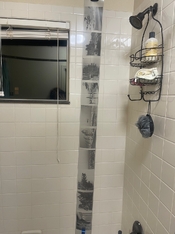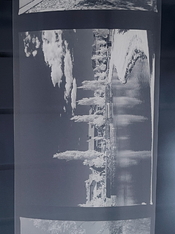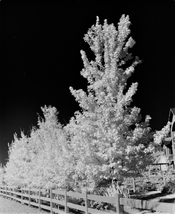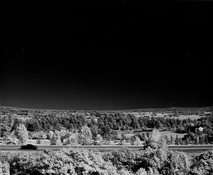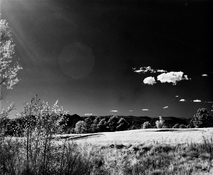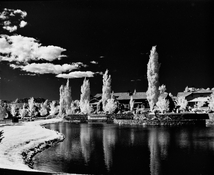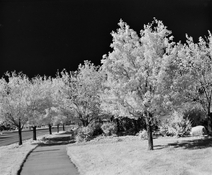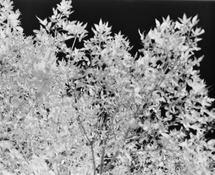Some thoughts after thinking it over:
We know for sure Foto-200 is Aviphot 200, and FN64 is Aviphot 80. Aviphot 200 tops off at 750 nm, Aviphot 80 tops off at ~775 nm. Thus it is definitely not Aviphot-200, and Aviphot 80 may be too slow - from what I've read Adox HR-50 goes down in EI by a few stops with an R72 filter.
There are only, to my knowledge, 3 film stocks still in production that are intended to have IR sensitivity - Aviphot 200, Aviphot 80, and Ilford SFX 200. Only Aviphot 80 reaches to 775 nm.
Tasma films have little to no IR sensitivity, their upper limit is 730 nm at best. Type-25L is also very contrasty, very noticeably more than Aviphot 200. Type-42L has slightly more contrast than Aviphot 200. Tasma does not manufacture any other 35 mm photographic film.
FPP sells a 200-speed IR film that they claim has sensitivity all the way to 850nm (!). Perhaps this is the same as Astrum's IR-200, even though they don't label it as such? This does not match with any currently produced film, at least not one that can be easily found for respooling. The thin polyester base also suggests an aerial film versus SFX 200's traditional acetate base.
In that case, Aviphot 400 is a possibility. It has enough sensitivity, and the base material and thickness matches. However, it has been out of production for over a decade by now and the remaining stocks are believed to have dried up. That said, 200 ISO is an appropriate compensation factor for ~1 decade-expired film, if it was Aviphot 400.
Maybe FPP and Astrum/Svema are sitting on the last pancakes of Aviphot 400 after all? It's possible FPP is just making stuff up, but if you really are seeing IR response at EI 50 from a supposed 200 speed film - there are very few options for what it could be.


